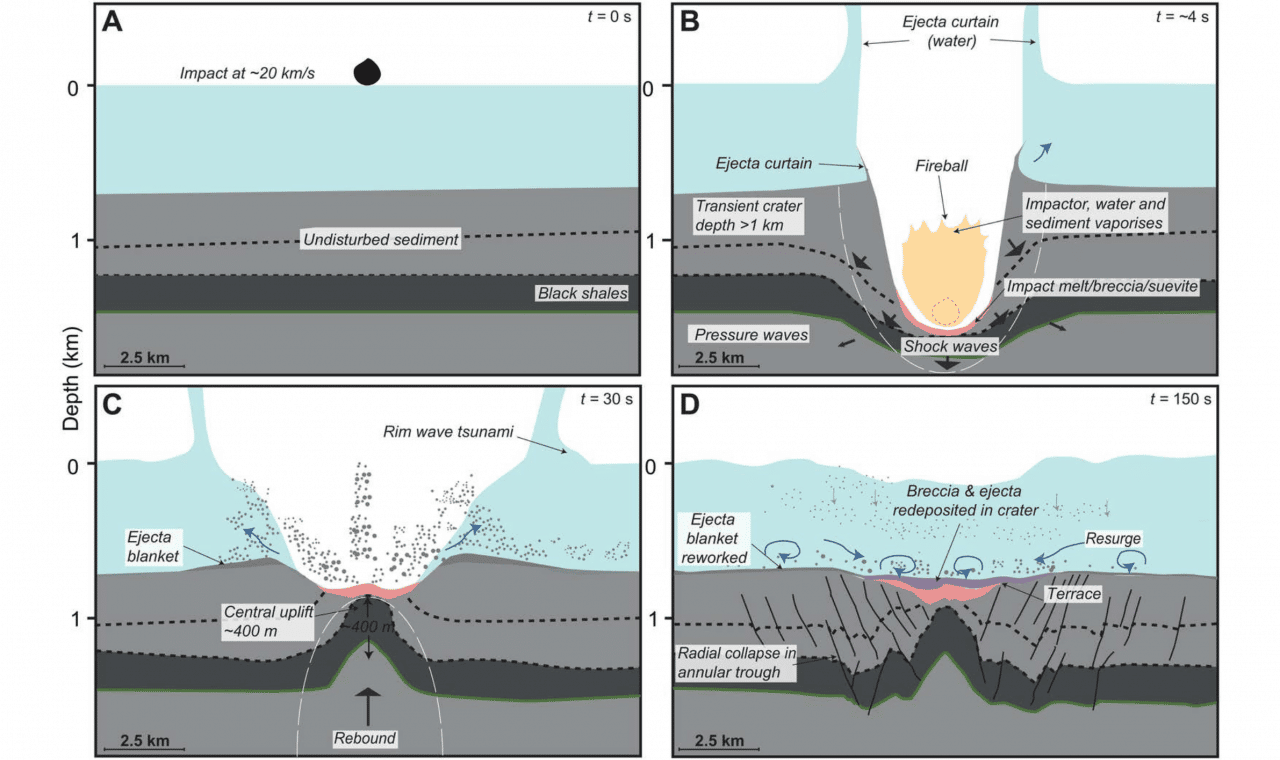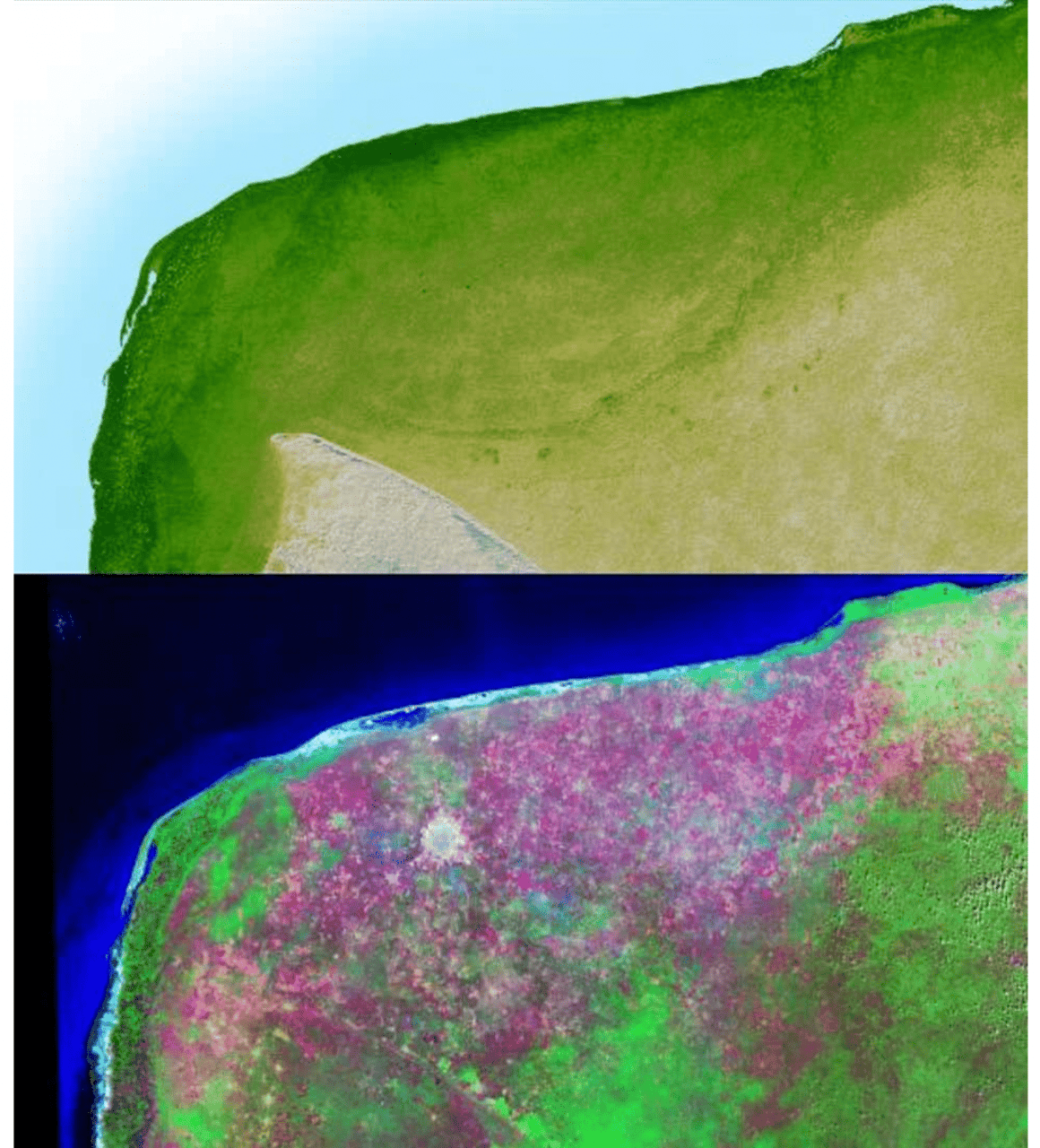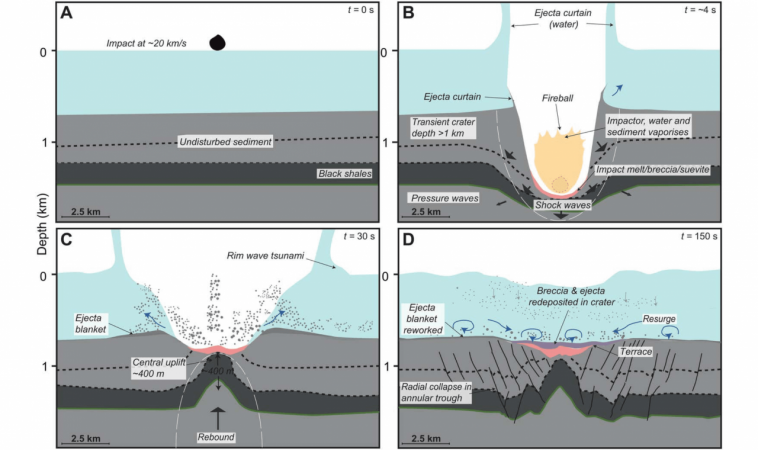Researchers say they have discovered a large crater on the bottom of the Atlantic Ocean that appears to be 66 million years old. This means that whatever caused the crater, the impact on Earth occurred around the same time as the rock that struck the Yucatán peninsula, which ended the reign of the dinosaurs.
The newly discovered geological feature is located off the coasts of Guinea and Guinea-Bissau in West Africa and is known as the “Nadir Crater”. It is more than 5 miles wide, lies a quarter of a mile below the ocean floor, and is nearly 3,000 feet deep. A paper describing the crater’s geological structure and possible origin has been published in the journal Science Advances.
In their study, the team proposed three possible origins for this large crater: it came from the same parent body as the Chicxulub asteroid, which disintegrated close to Earth; at the same million-year period Inside, a collision in the asteroid belt pushed a handful of asteroids toward Earth; or the timing of the two impacts was a complete coincidence.
Uisdean Nicholson, a geoscientist at Heriot-Watt University in Scotland and lead author of the new paper, explained: “If the first scenario is correct (same parent asteroid), it would provide some very important new information about what happened in that event — both in space and on Earth.”

Above: Model of the Nadir crater impact sequence during the first 150 seconds.
There is overwhelming evidence that most life on Earth died after an asteroid impact 66 million years ago. The impact caused major earthquakes, tsunamis, and most importantly, a “nuclear winter” that dramatically changed the climate. About three-quarters of life on Earth was wiped out in this event, including all non-avian dinosaurs.
Ustin Nicholson said: “The asteroid that caused Chicxulub was much larger than we thought Nadir. We expect Chicxulub to release 10,000 more energy than it did. times. So Nadir’s impact pales in comparison to the Chicxulub crater.”
Nonetheless, Nicholson added: “Nadir itself is a very serious regional disaster, causing major earthquakes, tsunamis and airbursts.”
The researchers identified this subterranean crater using seismic reflection methods, which detect different structures in deep sediments by sending pressure waves to the ocean and seafloor. This is similar to the principle of lidar, a technique used by archaeologists to find remains hidden under dense foliage.
Based on the size of the crater and the ratio of height to width, this crater appears to have been created by an impact, according to the researchers. Computer models show the asteroid that created the crater was about 1,300 feet (396 meters) in diameter and released about 1,000 times the energy of last year’s massive volcanic eruption in Tonga. You know, this volcanic eruption in Tonga has been so, so intense that scientists are considering adding a whole new category to extreme volcanic eruptions.
But Nadir’s size is only one piece of the puzzle. The most intriguing factor of the crater is its age – it appears to have formed around the same time as the dinosaurs went extinct.

Above: NASA Landsat and SRTM imagery of Yucatan, showing the rim of Chicxulub Crater. Urban areas are in white, and magenta and green areas represent vegetation.
Peter Schultz, a planetary geologist specializing in impact craters at Brown University, said: “This newly discovered crater, the 24-kilometer diameter Bortish and Chicxulub craters are all in (1 million years), which is unusual. If there is a connection between the three, their separation would require the formation of structures associated with the breakup of the asteroid so that the debris intersects Earth’s orbit.”
First, the team had to prove the origin of the crater, which required some work. “We can’t be sure this is an impact crater until we find physical samples of impact minerals from the crater floor,” Nicholson said. The team came up with a plan to use a drill to collect samples from the crater. They could then accurately determine the age of the crater from the crater’s core.
Geoscientist Ustin Nicholson said the core work won’t take place until 2024. But if it’s going to take two years to figure out what really happened 66 million years ago, it’s worth the wait.




GIPHY App Key not set. Please check settings